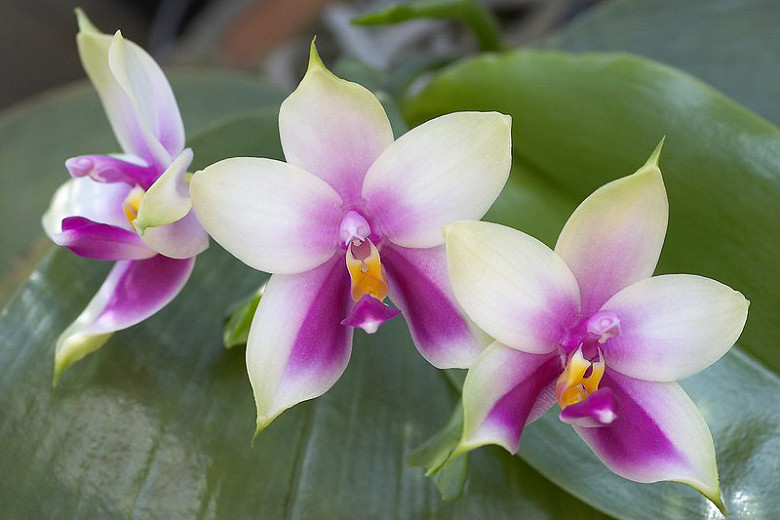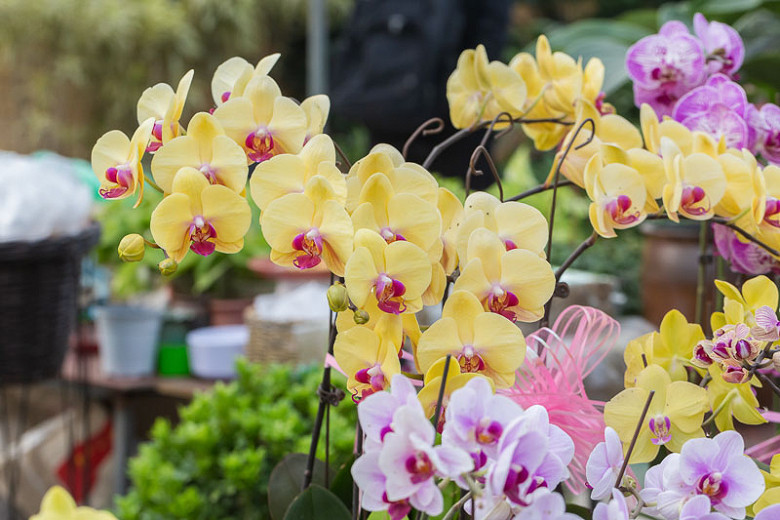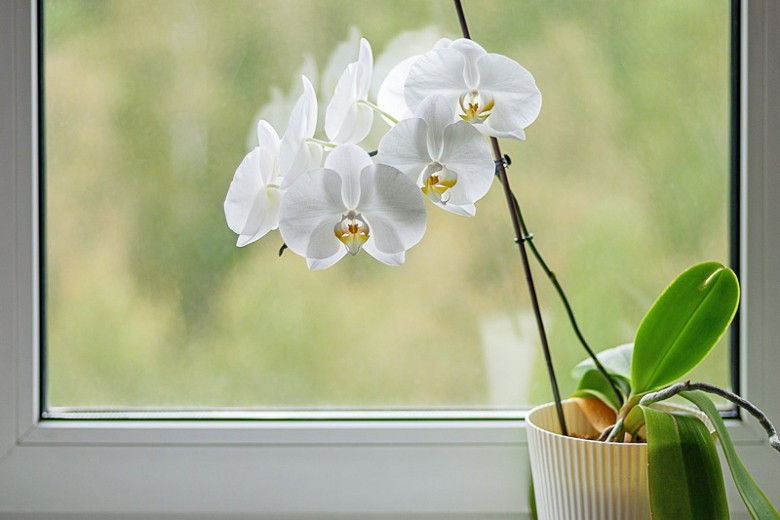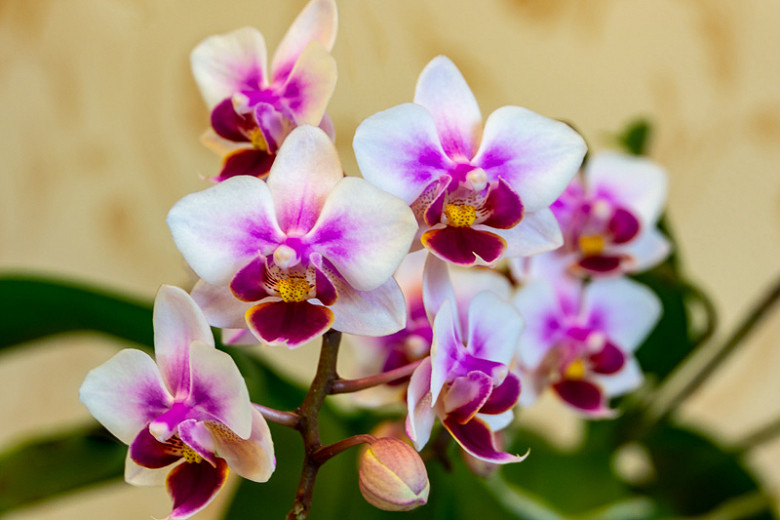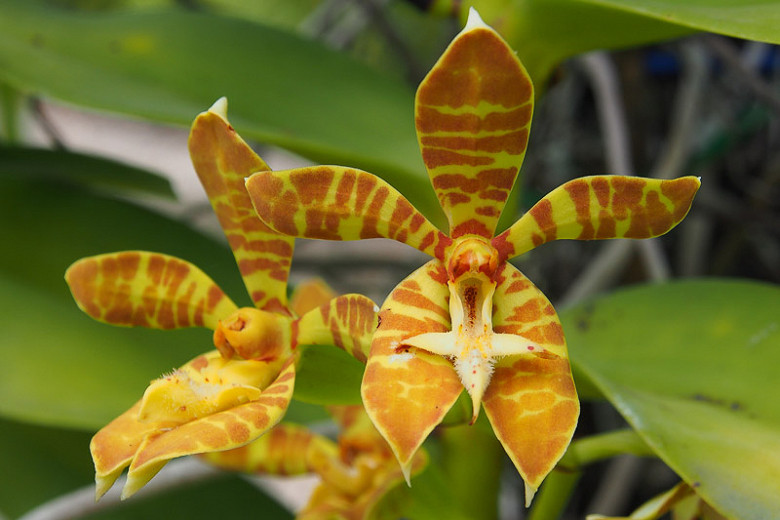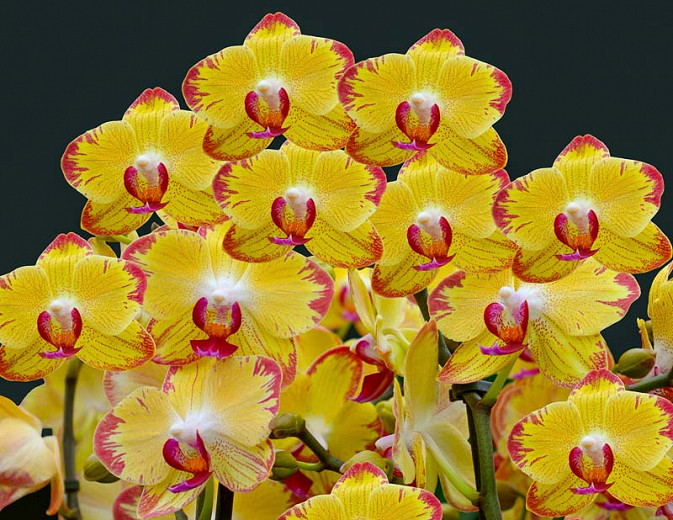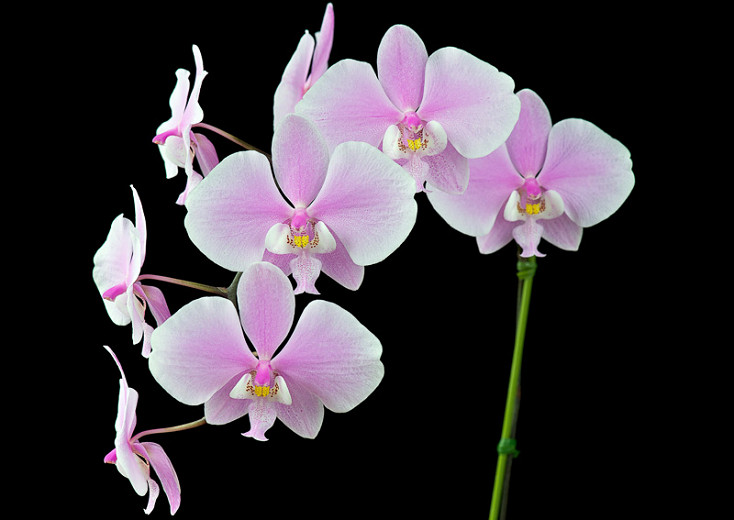Phalaenopsis bellina (Moth Orchid)
Phalaenopsis bellina (Moth Orchid) is an evergreen, epiphytic orchid boasting highly fragrant, waxy, star-shaped flowers, up to 2 in. across (5 cm). Each citrus-scented blossom features buttery-green petals deeply saturated with fuchsia or violet near their base. Blooming often from spring through summer, they are borne on erect to ascending, short stems. Emerging from the leaf axils, a single inflorescence typically carries only 2 or 3 flowers at a time. Phalaenopsis bellina does not need to rest for flowering. The inflorescence on older plants can rebloom year after year, so do not cut off any green viable inflorescence. The pendulous, succulent leaves are thick, oval, light green, 12 in. long (30 cm). Native to Malaysia and Borneo, Phalaenopsis bellina can be found growing in the canopy of trees where they receive abundant sunlight, and experience pronounced wet and dry cycles. Today it is one of the most commonly cultivated species in the genus. Resilient and easy to grow, Phalaenopsis bellina is an excellent choice for the home or greenhouse.
- Grows up to 3-4 in. tall (7-10 cm).
- Grows in an open bark-based compost and position with good indirect light. An east or west window would be ideal.
- Needs a minimum night temperature of 66-68°F (19-20°C) and a daytime temperature of 75-78°F (24-26°C).
- Fluctuating temperatures can cause bud drop on plants with buds ready to open.
- Maintain high humidity (50-80%) for most of the year by setting the plant on a tray of gravel, partially filled with water, so that the pot never sits in the water.
- Water regularly throughout the growing season. Reduce watering slightly during the winter. Do not let the roots dry out completely. Avoid letting the plant sit in water. Mist the plant lightly in summer.
- Water only in the morning, so that the leaves dry by nightfall. This will prevent rot.
- Feed every 2-3 watering with a special liquid fertilizer for orchids, taking 1/2 of the dose indicated on the vial. In winter, fertilization should be reduced or eliminated until new growths occur.
- Propagate by division. Cuttings or offshoots may be rooted successfully when roots are 1 in. long (2.5 cm).
- Once the flowers have faded, cut the flowering stalk back to just above the second node (joint) visible beneath the spent flowers. A new flowering side shoot may develop.
- Phalaenopsis can be repotted at any time of year. The best time to repot is when new roots with green tips emerge at the base of the plant.
- To repot, remove all the old medium from the roots, snip off any diseased or dead roots, and spread the remaining roots over a handful of medium in the bottom of a new pot. Fill the rest of the pot with medium, working it among the roots, so that the junction of the roots and the stem is at the top of the medium. Gently ensure the compost is pressed down firmly around the perimeter of the pot. Drain the plant thoroughly and do not allow it to sit in water.
- Generally disease free. Keep an eye out for aphids, glasshouse red spider mites, and mealybugs.
- Native to Malaysia and Borneo.
Tip for reblooming
- If a plant is large and healthy but does not produce flowers in a reasonable time, then reduce the temperature by 8°F (5°C) for four weeks, and a flower spike will usually develop.
Requirements
| Hardiness | 10 – 12 |
|---|---|
| Plant Type | Orchids |
| Plant Family | Phalaenopsis- Moth Orchids |
| Exposure | Partial Sun |
| Season of Interest | Summer (Early,Mid,Late)Fall |
| Height | 3" – 4" (7cm – 10cm) |
| Water Needs | Average |
| Maintenance | Average |
| Soil Drainage | Well-Drained |
| Characteristics | Fragrant, Showy, Evergreen |
| Garden Uses | Patio and Containers |
